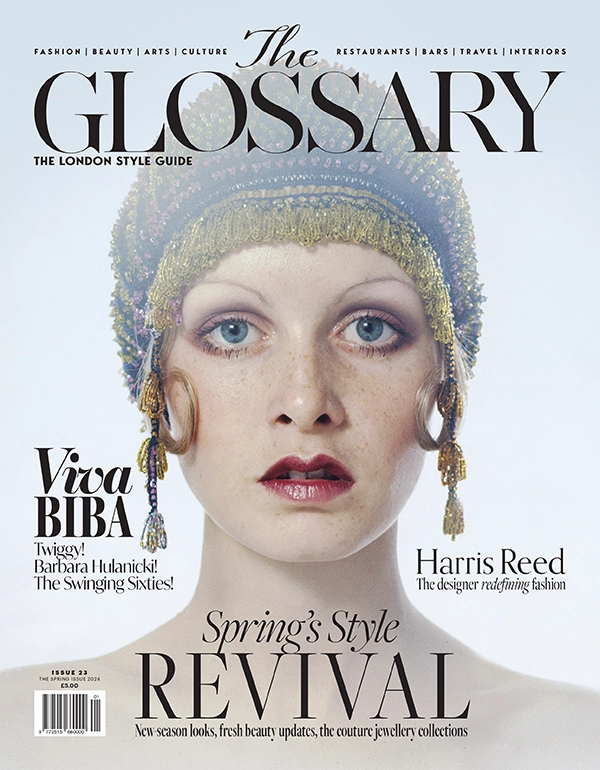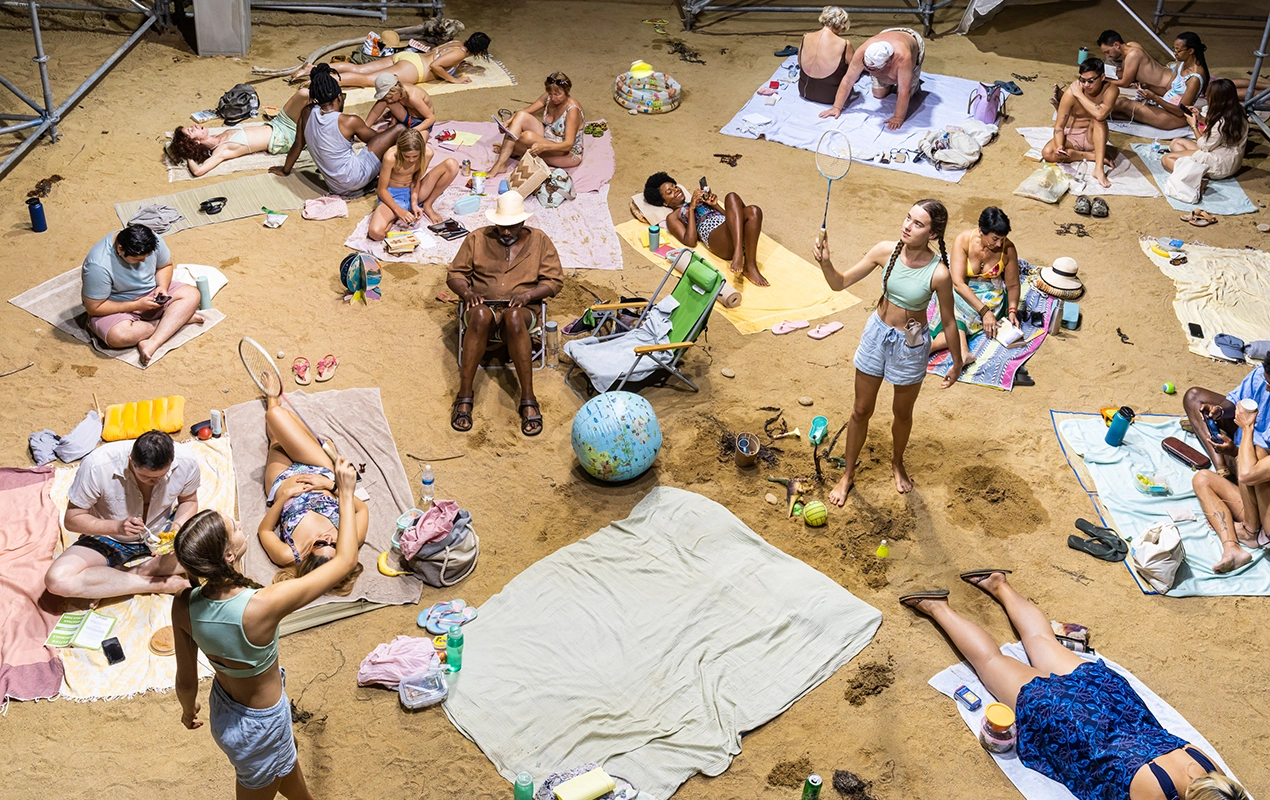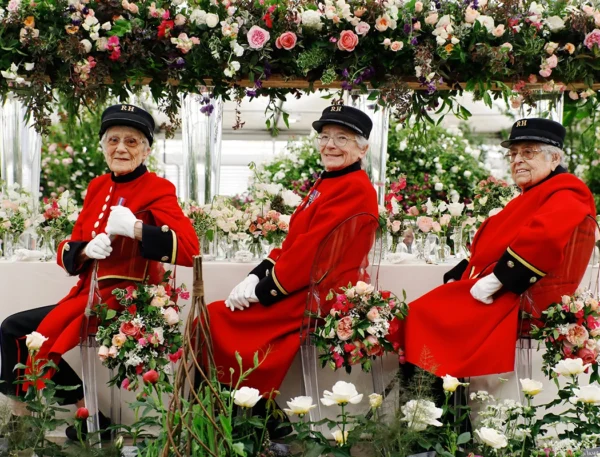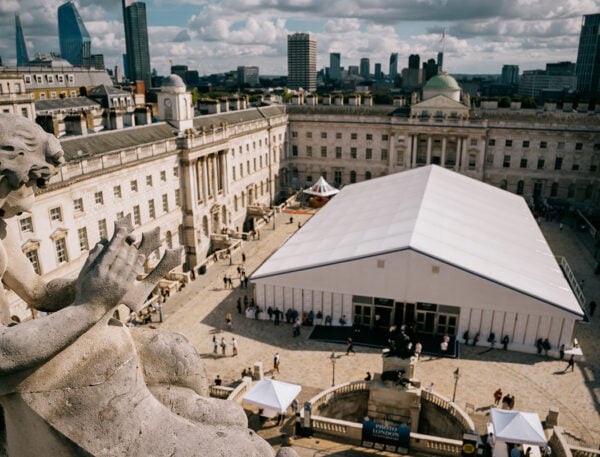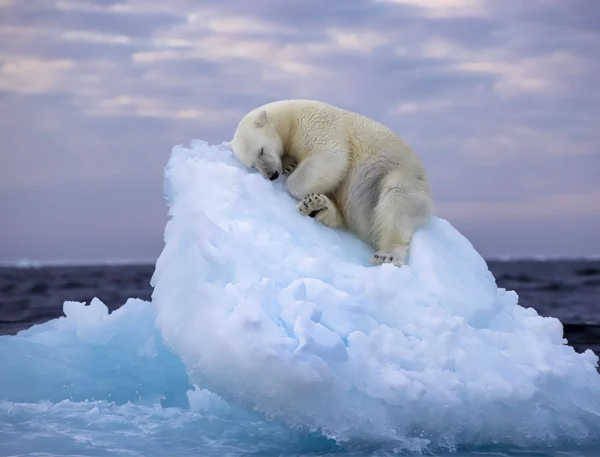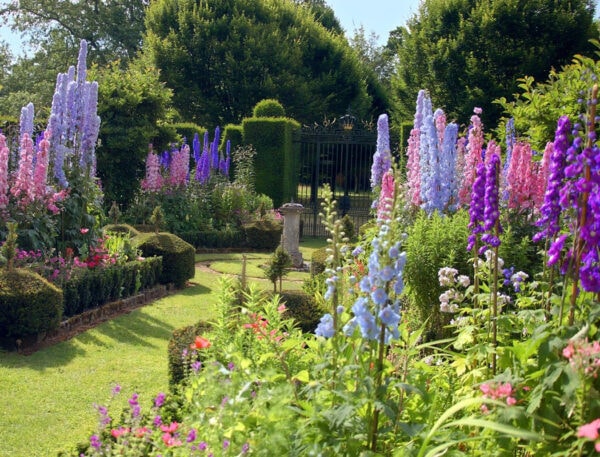These are the seminal London art exhibitions confronting climate change this summer
As we are all too aware, the climate crisis is already here. And now it’s not just animating protests in the streets, but also exhibitions and events in London’s major galleries, leading to a powerful new creative movement: climate change art. But can the art world ever truly grapple with this most challenging of issues? Arts writer Eloise Hendy explores the latest crop of London art exhibitions to find out.
If you knew you only had a small amount of time left to live, how would you spend it? Would you take the trip of a lifetime, keep going to work, or just sit around and wait, maybe complain a little? This, in a nutshell, is the dilemma facing the characters at the heart of Sun & Sea, the opera-performance by Rugilė Barzdžiukaitė, Vaiva Grainytė and Lina Lapelytė, which was presented as Lithuania’s national entry for the 2019 Venice Biennale, and has since been touring Europe.
Sun & Sea is made up of around 20 performers laid out on an artificial beach, watched from above by an audience ringed around a mezzanine, like gods on Mount Olympus looking down on mortals in another realm below. And, below, the mortal holidaymakers sunbathe, eat sandwiches, play badminton or chess, and, mainly, think about themselves; their lives, loves and petty grievances.
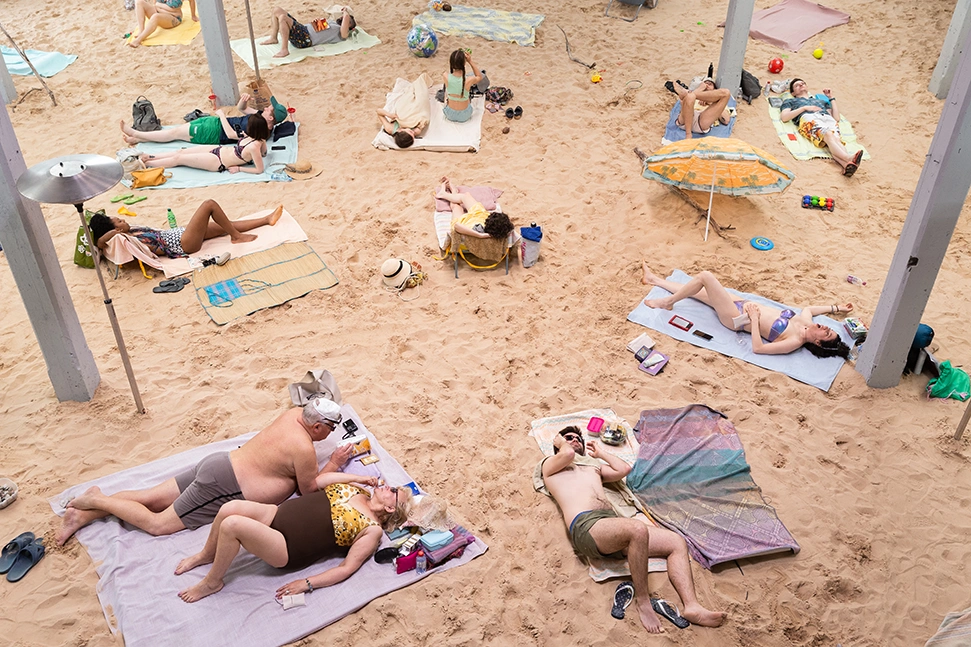 Pin
Pin But, throughout this surreal opera, a strange, threatening world keeps breaking through. The eruption of a volcano, which, the holidaymakers sing, “not a single climatologist predicted”. A workaholic who fears his own pent-up emotions bursting out of him “like lava” who intones “exhaustion” over and over. A wealthy mother who reels off seas and coral reefs like a ticked to-do list (“My boy is eight and a half / and he’s already been swimming in / The Black / The Yellow / The White / The Red / The Mediterranean / Aegean seas…”) Teenage twins who sing about 3D printing coral reefs and bees, so they never “remain / In an empty planet without birds, animals and corals.” Catastrophe seems to lurk at the edges of the ostensibly mundane beach scene, but the vacationers just sit around, play games, rub sunscreen into their burning limbs.
Recently, the opera was presented at the Albany by LIFT, We Are Lewisham and Serpentine, as part of LIFT 2022 and Back to Earth, Serpentine’s long-term, interdisciplinary, artistic programme responding to climate change. Because, here’s the thing — the performers’ dilemma is the same one we all face, namely how to spend our days at the end of the world; how to fiddle while the world burns
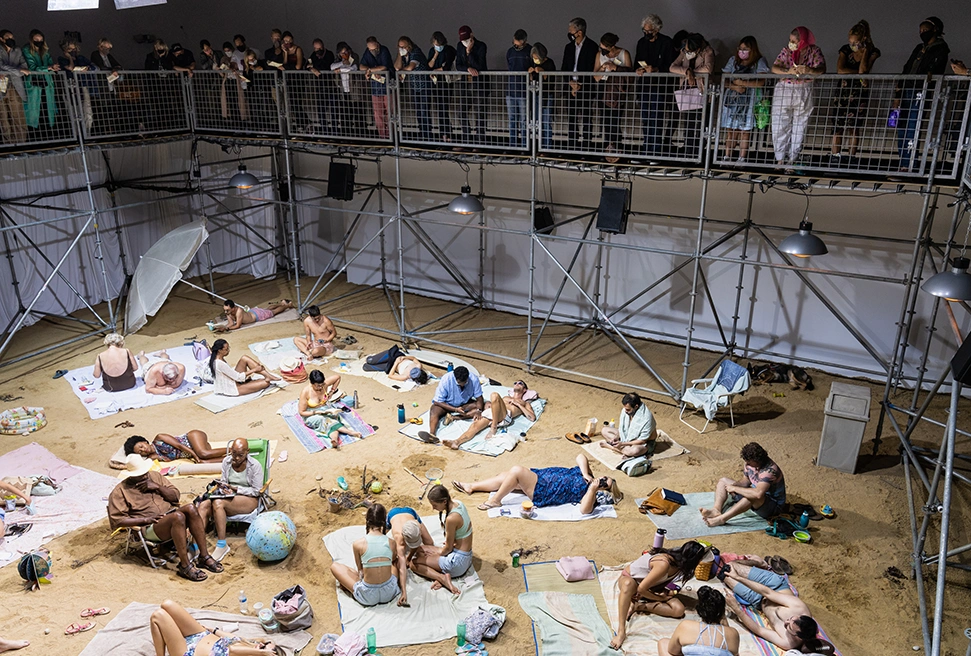 Pin
Pin After decades of environmental protest, it shouldn’t be surprising that the art world is now turning its attention to climate change. Really, the focus is long overdue. And yet, the sheer number of shows that are simultaneously attempting to tackle this most challenging of issues is, if not surprising, certainly remarkable. Sun & Sea opened at the Albany the same week the Royal Academy’s climate-themed Summer Exhibition opened, and just a couple of weeks after Our Time on Earth opened at the Barbican. Then there is, of course, Serpentine’s Back to Earth — the main exhibition event to which Sun & Sea is attached. Other live programming will follow throughout the summer and on into the autumn. This coming weekend (July 16 – 17), for example, Serpentine will present Queer Earth and Liquid Matters in collaboration with Stone Nest and Queercircle — a two-day programme bringing together artists, writers, filmmakers, sound and architecture practitioners to explore decolonial and queer ecologies.
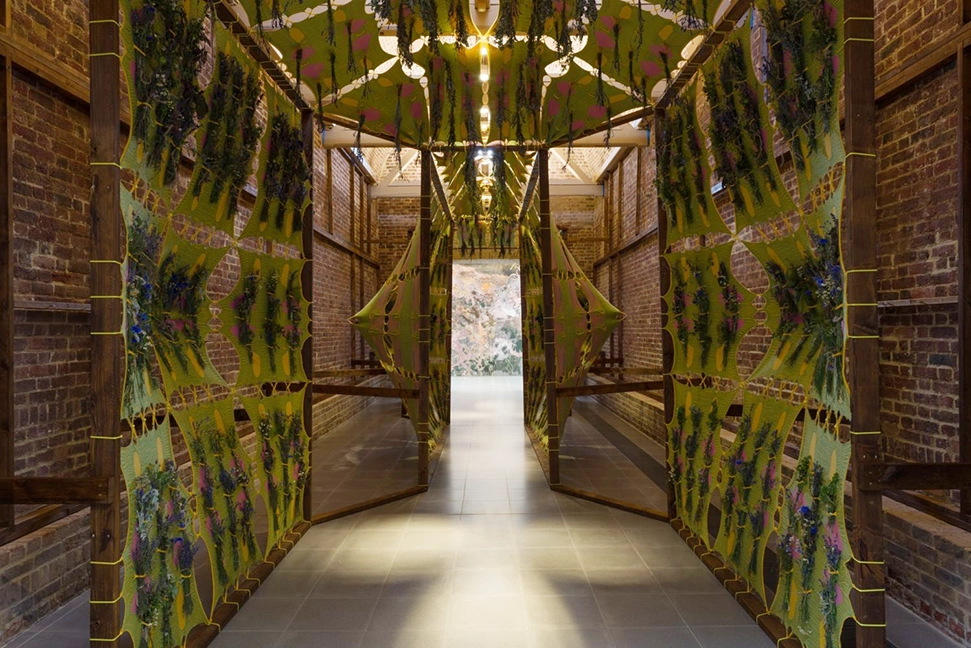 Pin
Pin In both Back to Earth and Our Time on Earth, there is intelligence, innovation, and, remarkably, a great deal of hope. Serpentine’s offering is interdisciplinary and multi-sensory: three screens play an evocative and dissecting ‘zombie movie’ about white supremacy and colonial extraction; scents fill the space on rotation, slipping between ‘forest’, ‘water’, and the smell of ‘money’; London-based duo Cooking Sections have introduced a CLIMAVORE menu, which includes seaweed soda bread, rope grown mussels and an agar panna cotta; Brian Eno fills a cavernous, church-like space with wavering, vaguely mournful music, mixed with uncanny whispers and animal sounds.
If Back to Earth is evocative, Our Time on Earth is more activist and engaged. Art, science, technology and indigenous knowledge intersect in a hectic, dense and sensory labyrinth. Teeming soil, tangled root walkways, and magnificent new building materials made of mycelium all feature, in a cacophony of video and sound. The effect is overwhelming, but incredibly inspiring – a wild, sprawling ecosystem of innovation, activism and radical ideas.
The question both shows seem to be attempting to ask is, on the surface, quite simple. As Serpentine puts it, “how can arts institutions bring visibility to climate actions that create positive change for communities, places and imaginations around the world?” Yet, of course, in reality this is far from simple, and goes far beyond the work of individual exhibitions and displays. How can art respond to the devastating scale of the climate crisis? What tangible, practical changes need to be made in the way institutions function? What happens when the show closes?
On Tuesday 5 July, only metres away from the Royal Academy’s Summer Exhibition, five supporters of the Just Stop Oil coalition glued themselves to a 500-year-old depiction of The Last Supper – a reproduction of the Leonardo da Vinci original that has been attributed to his pupil, Giampietrino. Jessica Agar, a 21-year-old student at the protest, was quoted in The Guardian as saying: “I am an art student, but there is no place for me to follow my calling as an artist in a world where I have no future.”
This, ultimately, should be the last word on the relationship between climate change and the art world, and it should be the driving force behind every exhibition, event and action any institution in the capital and beyond brings into being. This summer of climate art cannot be a flash in the pan. After these shows close, it cannot be business as usual. Every gallery must think, like each one of us must, what to spend time on at the end of the world as we know it – in a world where a vast number of young people, like Agar, feel like they have no future. There’s no time to waste.
‘Our Time on Earth’ is on until 29 August at The Barbican, Silk Street, Clerkenwell, London EC2Y 8DS; barbican.org.uk
‘Back to Earth’ is on until 18 September at the Serpentine Gallery, Kensington Gardens, Kensington, London W2 3XA; serpentinegalleries.org
